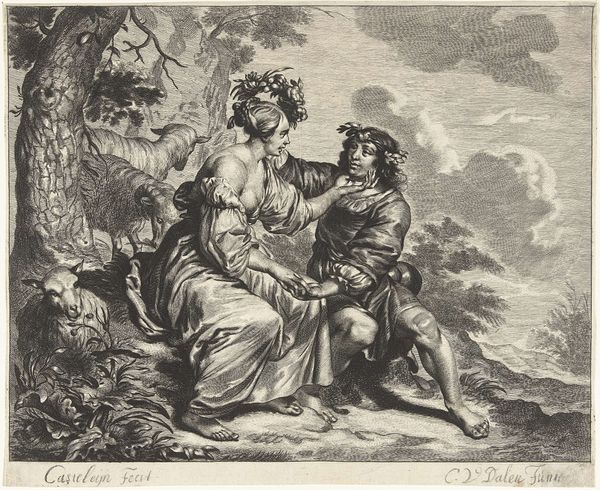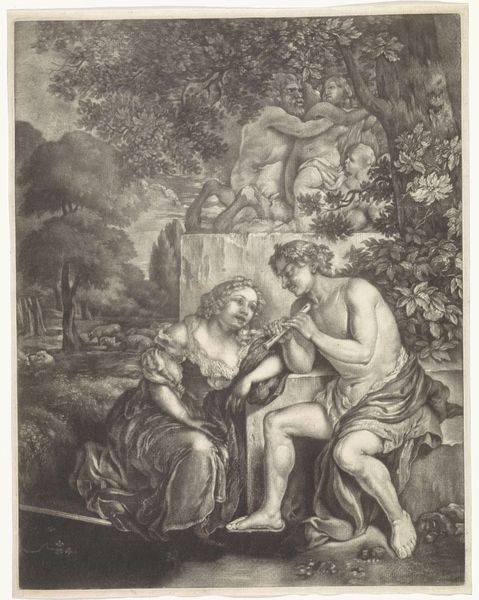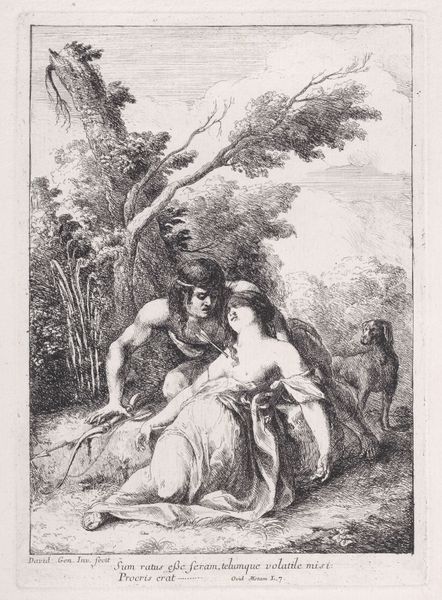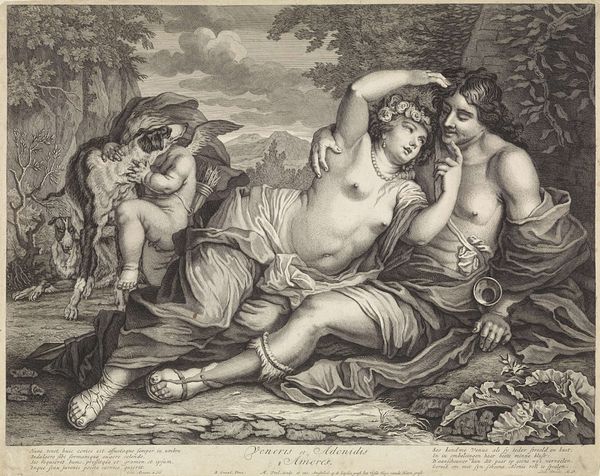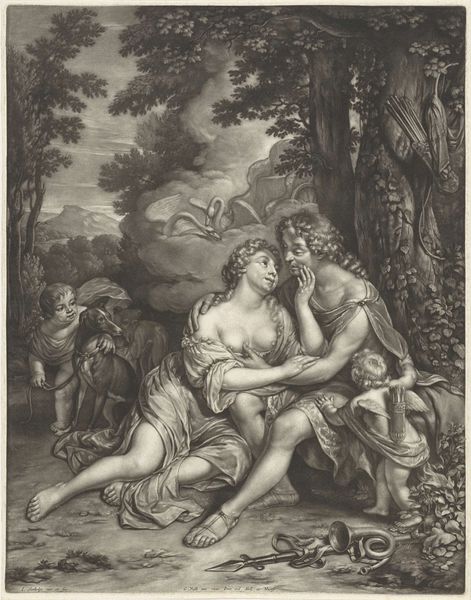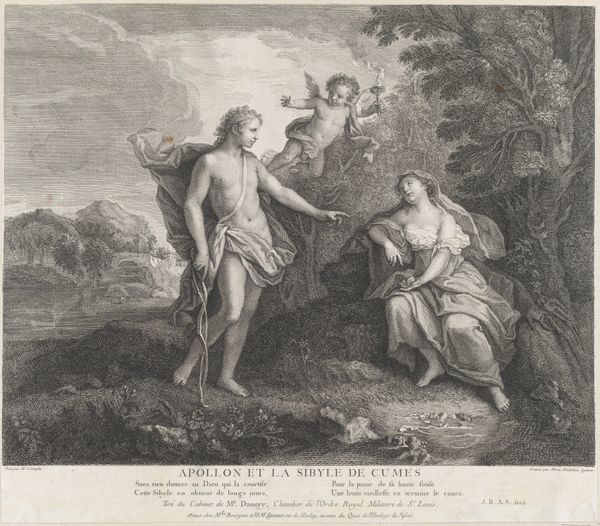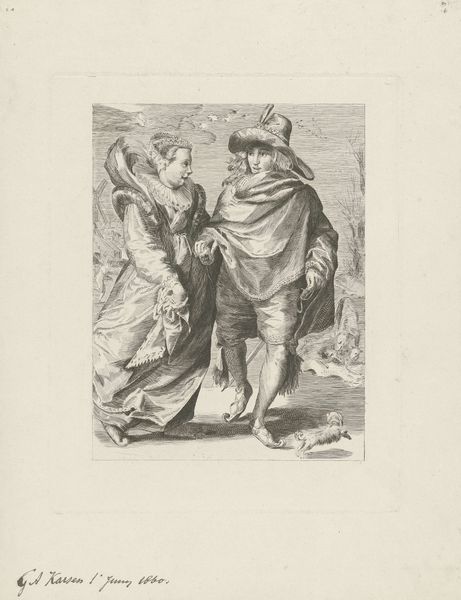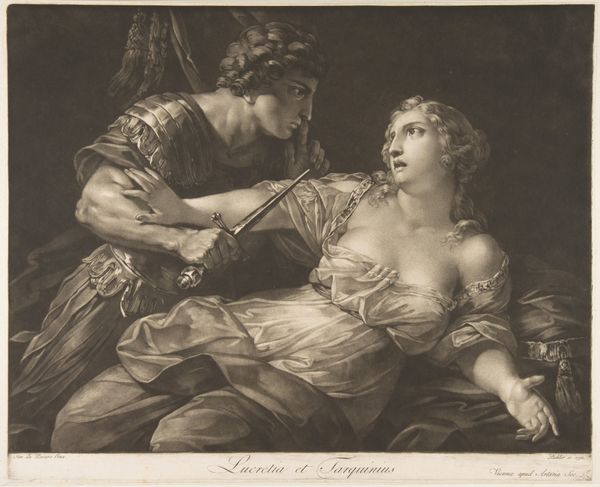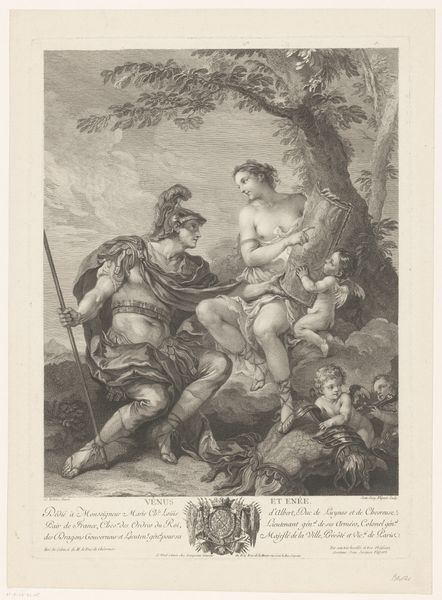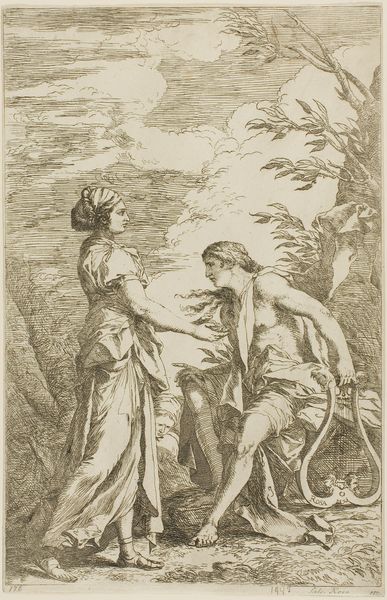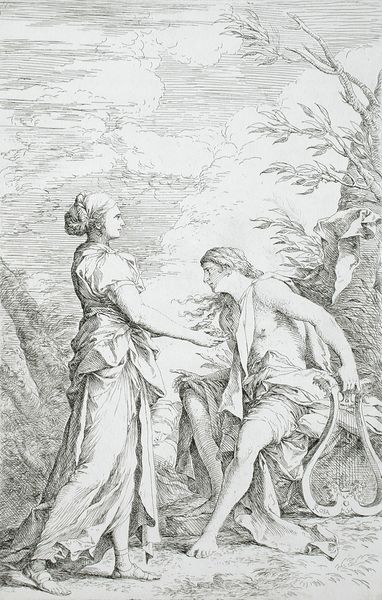
print, etching, engraving
#
narrative-art
#
baroque
# print
#
etching
#
landscape
#
figuration
#
line
#
genre-painting
#
engraving
Dimensions: height 211 mm, width 257 mm
Copyright: Rijks Museum: Open Domain
Curator: Welcome. Before us is Cornelis van Dalen II’s "Herder en herderin in landschap," created sometime between 1648 and 1664. It's a delicate print using etching and engraving techniques. What are your first impressions? Editor: It's strangely…theatrical. The way the figures are posed, it's as if we've stumbled onto a scene from a pastoral play. Curator: Precisely! Notice the use of line. The engraver's decisive marks define forms clearly against a neutral backdrop. Light becomes surface modulation: Observe how parallel lines of varying thickness describe drapery. This builds sculptural form with an absence of color. Editor: The garlanded shepherd and shepherdess contribute to the playacting too. Flowers symbolize transience. What emotions and ideas do the central characters convey to a contemporary audience? Curator: The work, while ostensibly depicting a simple shepherd and shepherdess, operates within a complex symbolic vocabulary. The woman's touch, her placement of flowers upon the man, could suggest both tenderness and a commentary on ephemeral beauty and youth. Editor: It's fascinating how an image of simple pastoral life could contain such layers. Look at their positioning within the landscape, dwarfed by nature yet seemingly lords of it. It hints at humankind's place within, yet somewhat above, nature's realm. Curator: A key component of the visual storytelling hinges on the deliberate placement of motifs: the flowers, the shepherd's crook, the sheep... each contributes to a collective meaning, a romanticised view of nature and simplicity. Editor: Considering van Dalen’s baroque style, it brings an energetic and dramatic tone to familiar themes. In my view, even such modest materials like print on paper contribute powerful imagery to a visual memory bank shared among us. Curator: Your focus is keen; and for me the artist uses restrained means toward rich representational ends: it is a landscape that asks us to ponder form, artifice, and our complex connection with the pastoral. Editor: Yes. The work allows me to now reflect further upon our human impulse to mythologize and decorate, finding universal meanings in unassuming narratives of daily experience.
Comments
No comments
Be the first to comment and join the conversation on the ultimate creative platform.
